Our plan for today
Reminder: please fill out the PS6 feedback form if you haven't already.To get started for today's lab, download
the lab8_programs folder, rename it to include your name,
and save all your python code into this folder. Create a new file
called lab8.py. You will be writing many functions in
this lab. Be sure to use lots of comments. You can also create new
files, too, if you find that easier to manage.
- recursive triangles
- recursive box patterns (turtle graphics)
- recursive box patterns (cs1graphics)
- more recursive box patterns (cs1graphics)
asteriskLine(len) that creates
a line of asterisks of length len.
def asteriskLine(len):
return '*' * len
Here are some examples of how asteriskLine() works:
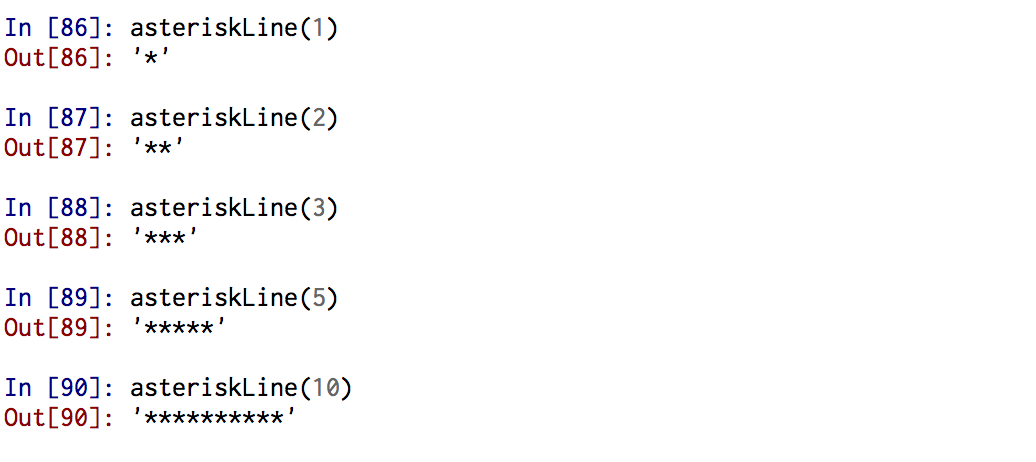
Task 1a. Recursive triangles In this task, you will write a python function called
asteriskTriangle() that will take
a length parameter and draw a triangle
pattern composed of lines of asterisks that get
successively smaller with each line.
The asteriskTriangle() function must be
recursive.
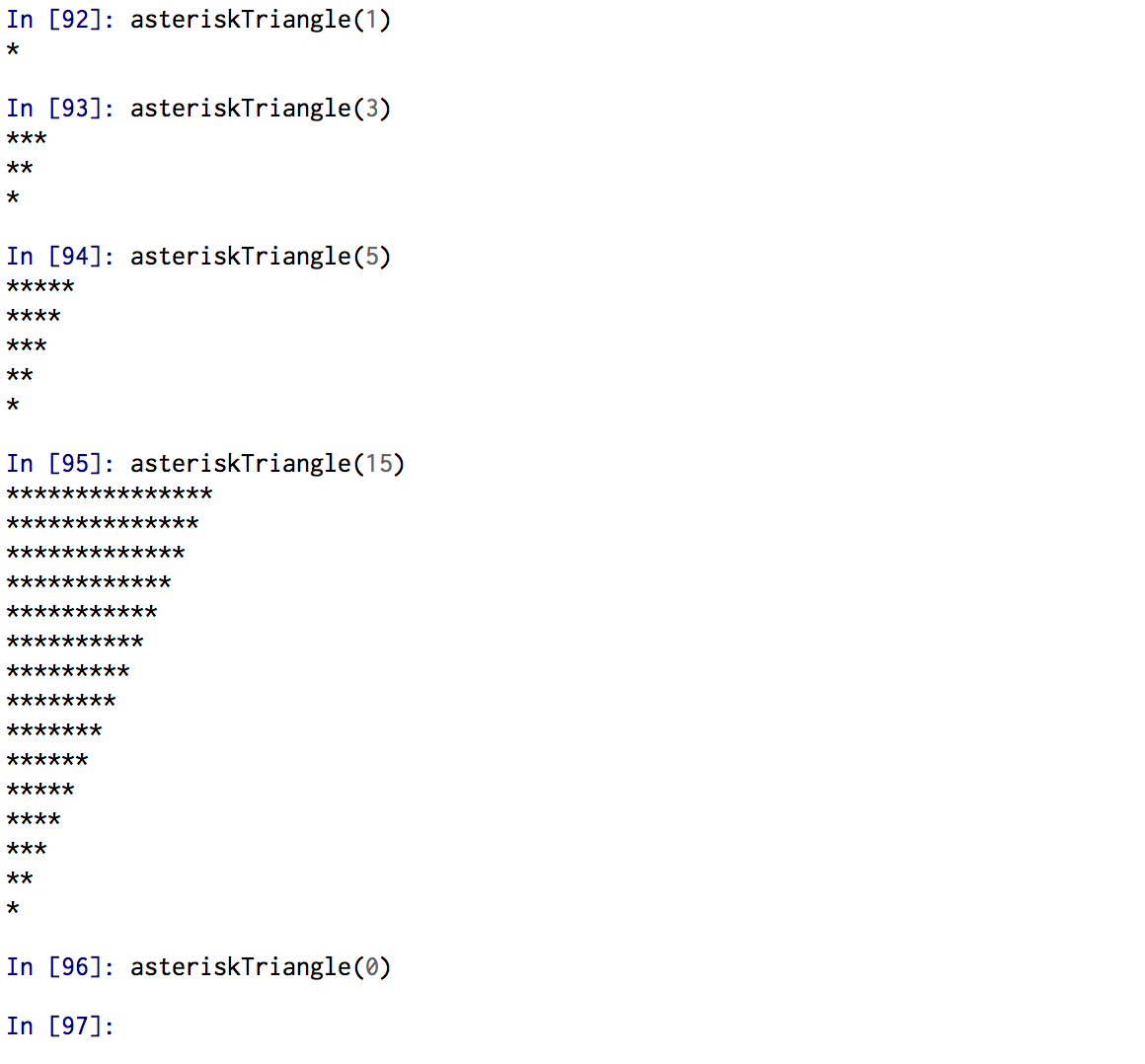
You can use the given
asteriskLine() function
to create the lines in the triangular pattern.
Task 1b. Sideways Peaks Write a new function called
peaks that takes two parameters:
- height: the number of lines to the peak (and also the number of lines "descending" from the peak)
- width: the number of asterisks in the initial line (increases by 3 per line until it reaches height number of lines).
Here are some sample invocations:
peaks(2,1)
<* <**** ****> *> |
peaks(4,2)
<** <***** <******** <*********** ***********> ********> *****> **> |
peaks(3,5)
<***** <******** <*********** ***********> ********> *****> |
peaks(1,0)
< > |
peaks(3,10)
<********** <************* <**************** ****************> *************> **********> |
peaks(8,1)
<* <**** <******* <********** <************* <**************** <******************* <********************** **********************> *******************> ****************> *************> **********> *******> ****> *> |
peaks function can use asteriskLines to produce the lines of asterisks (and string concatenate the "<" or ">" symbol as needed). Some hints:
- the
heightparameter controls the number of lines printed. The total number of lines printed is always twice the height. - the
widthparameter tells how many asterisks are printed on the first (and last) lines. Each successive line of asterisks differs from its predecessor by exactly 3 asterisks. - Study this table to see the pattern:
peaks(4,2)<** <***** <******** <*********** ***********> ********> *****> **>
peaks(3,5)<***** <******** <*********** ***********> ********> *****>
peaks(2,8)<******** <*********** ***********> ********>
peaks(1,11)<*********** ***********>
peaks(0,13)
Click here for some notes that you might find helpful with respect to thinking about recursive problems Hint:
print statements can be really helpful both for understanding how your function works and also for debugging your code.
Task 2. Recursive boxes with turtle graphics
In the lab8_programs folder, open the file
called recursiveTurtle.py. Note
the initialize_turtle() function that gets the turtle and
screen in good initial position, color, speed, etc. Note also how
the run() function
calls initialize_turtle(). Eventually, the call to your
function (e.g., row()) will go inside run().
Then to test your code, follow these steps: - run your file in Canopy
- type
run()in the interactive pane - watch your turtle do its thing
In this task, you will choose
one of the versions of the square() function below. Note that
Version A square() uses a for loop and is not recursive.
In most of the screen shots that are shown below, the turtle's pen
was set to red with this line of code: pencolor('red').
# Version A: Uses a for loop def square(length): """draws a square of size length maintains heading and position invariant""" for i in range(1,5): # or for i in range(4) fd(length) lt(90)
# Version B: No loops def square(length): """draws a square of size length maintains heading and position invariant""" fd(length) lt(90) fd(length) lt(90) fd(length) lt(90) fd(length) # back to starting location lt(90) # heading in same direction as start
Task 2a: row(number, size) Write a recursive method called
row(number,size) that draws a horizontal
row of number boxes of size size. This
function must be recursive and maintain a position and heading invariant.
row(3,50)
|
row(5,25)
|
spacedRow(number,size) that draws a horizontal
row of number boxes of size size with a constant space of size/4
between each square. This
function must be recursive and maintain a position and heading invariant.
spacedRow(3,50)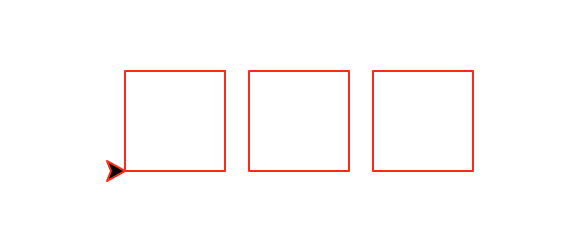
|
spacedRow(5,25)
|
decreasingRow(number,size) that draws a horizontal
row of number boxes. The first box has size size and each subsequent box
is half the size of the previous one. This
function must be recursive and maintain a position and heading invariant.
decreasingRow(3,100)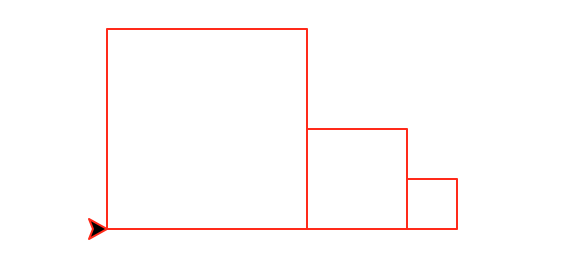
|
decreasingRow(5,100)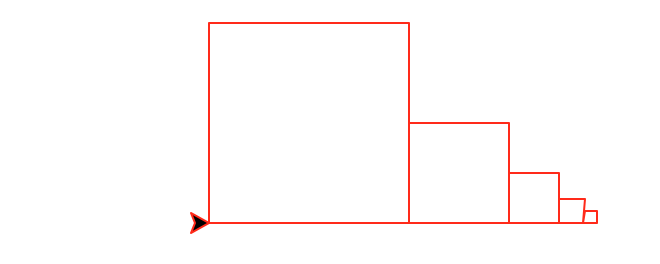
|
nestedSquares(number,size) that
draws number nested squares. The largest square has
size size and each subsequent box is half the size of the
previous one. The boxes are anchored in the lower left corner.
This
function must be recursive and maintain a position and heading invariant.
nestedSquares(3,90)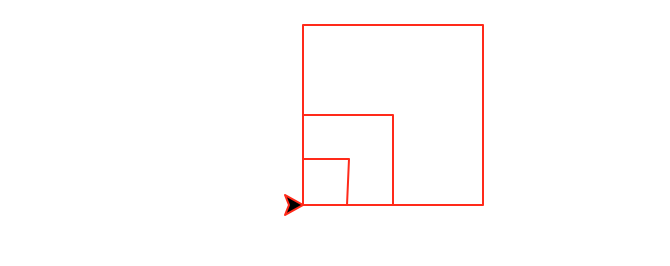
|
nestedSquares(5,130)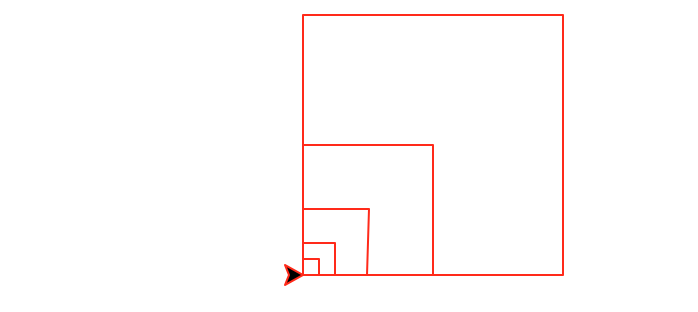
|
diagonal(number,size) that
draws number decreasing diagonal squares. The largest square has
size size and each subsequent square is half the size of the
previous one. This
function must be recursive and maintain a position and heading invariant.
diagonal(1,100)
|
diagonal(2,100)
|
diagonal(3,100)
|
superDiagonal(number,size) that
draws number decreasing diagonal squares. The largest square has
size size and each subsequent square is half the size of the
previous one. In superDiagonal, squares are placed on the diagonal
at both the upper right corner and the lower left corner. This
function must be recursive and maintain a position and heading invariant.
superDiagonal(1,125)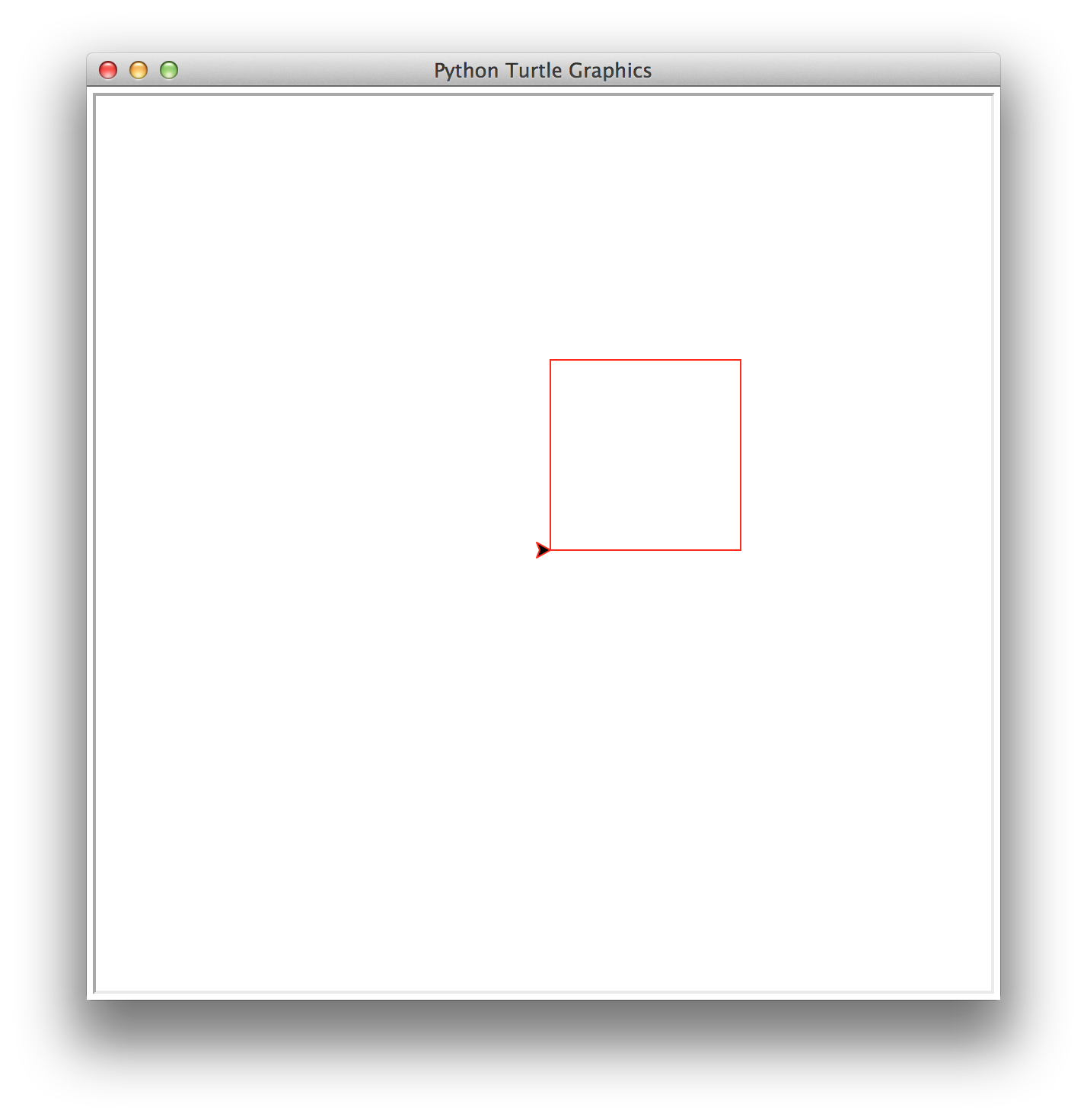
|
superDiagonal(2,125)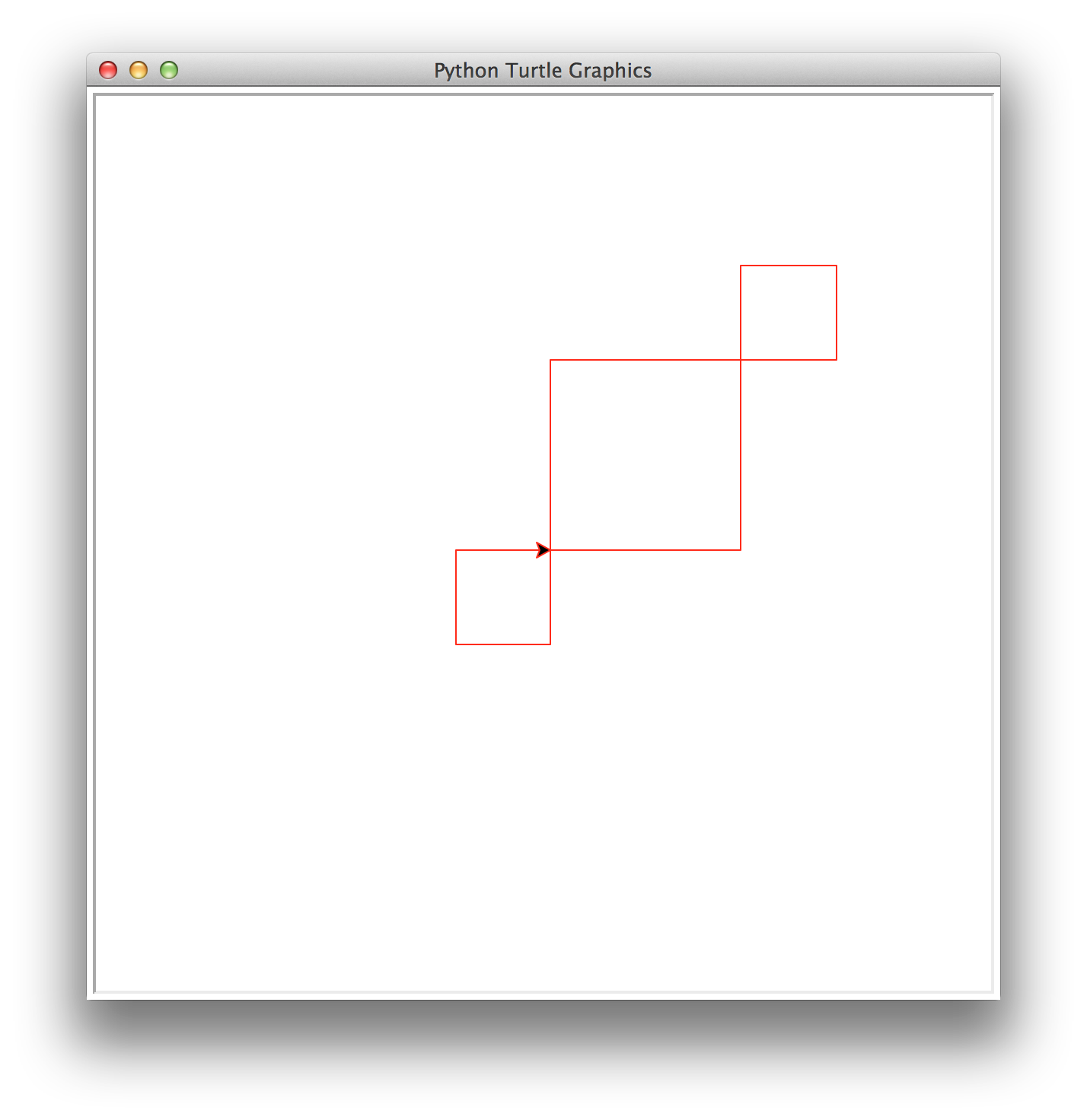
|
superDiagonal(3,125)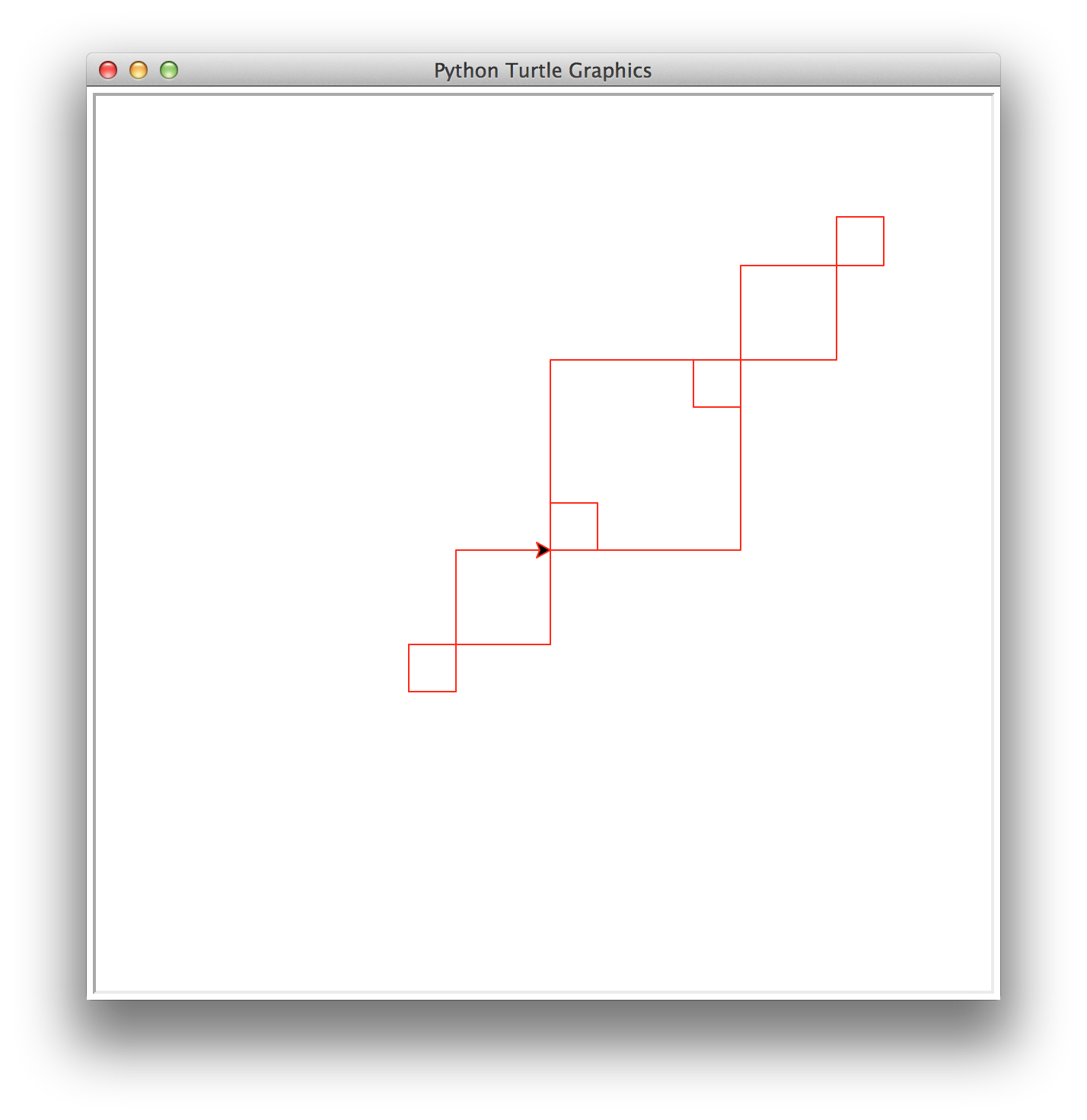
|
superDiagonal(4,125)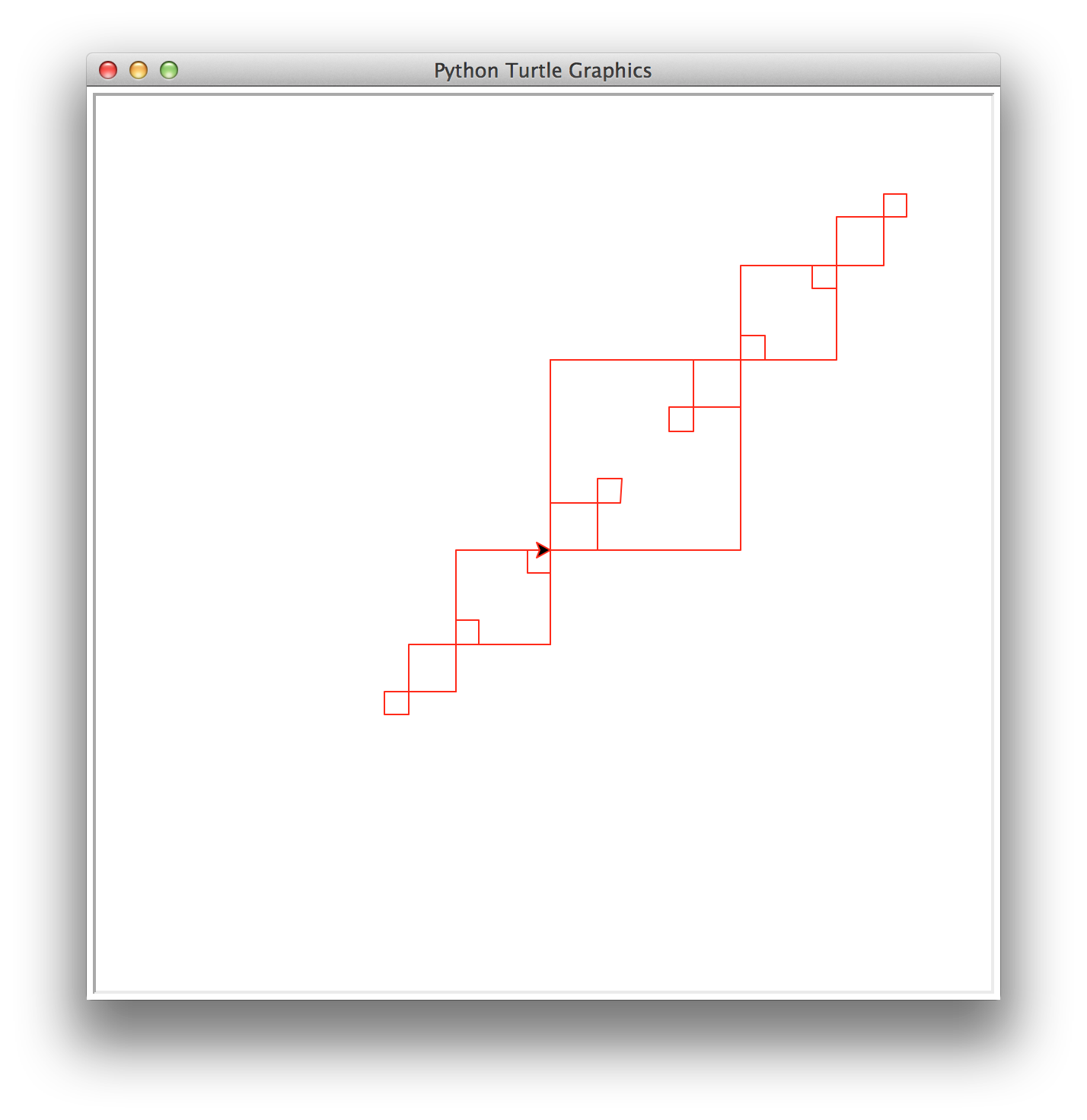
|
box(x,y,size,color1,canvas) that draws a single box of side
length size, centered at (x,y), filled with
the color color1, drawn on the given canvas.
def box(x,y,size,color1,canvas):
b = Rectangle(size,size,Point(x,y))
b.setFillColor(color1)
canvas.add(b)
Here are some sample invocations of the box function. Before
invoking box, this code is executed to set up the canvas:
labcanvas = Canvas(500,500,'ivory','labcanvas')
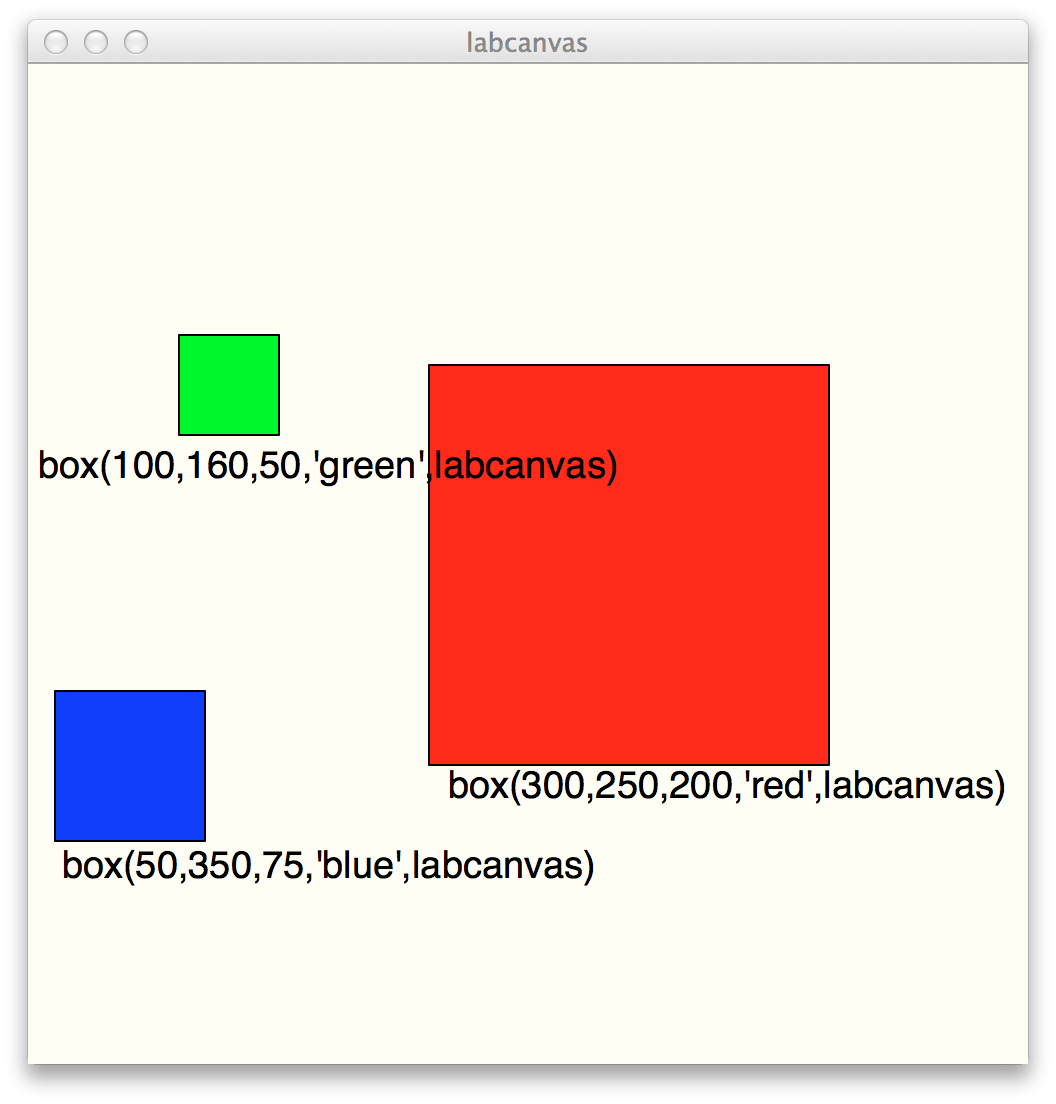
Your task is to write a recursive function called
makeNestedBoxes(x,y,size,color1,color2,canvas) that
produces nested boxes of alternating colors. The largest box is drawn first,
filled with color1, and then the next box has a side length
that is 10 smaller and is filled with color2, etc. This
alternating pattern continues until the box has a size that is less than 10.
Your makeNestedBoxes() function must be recursive.
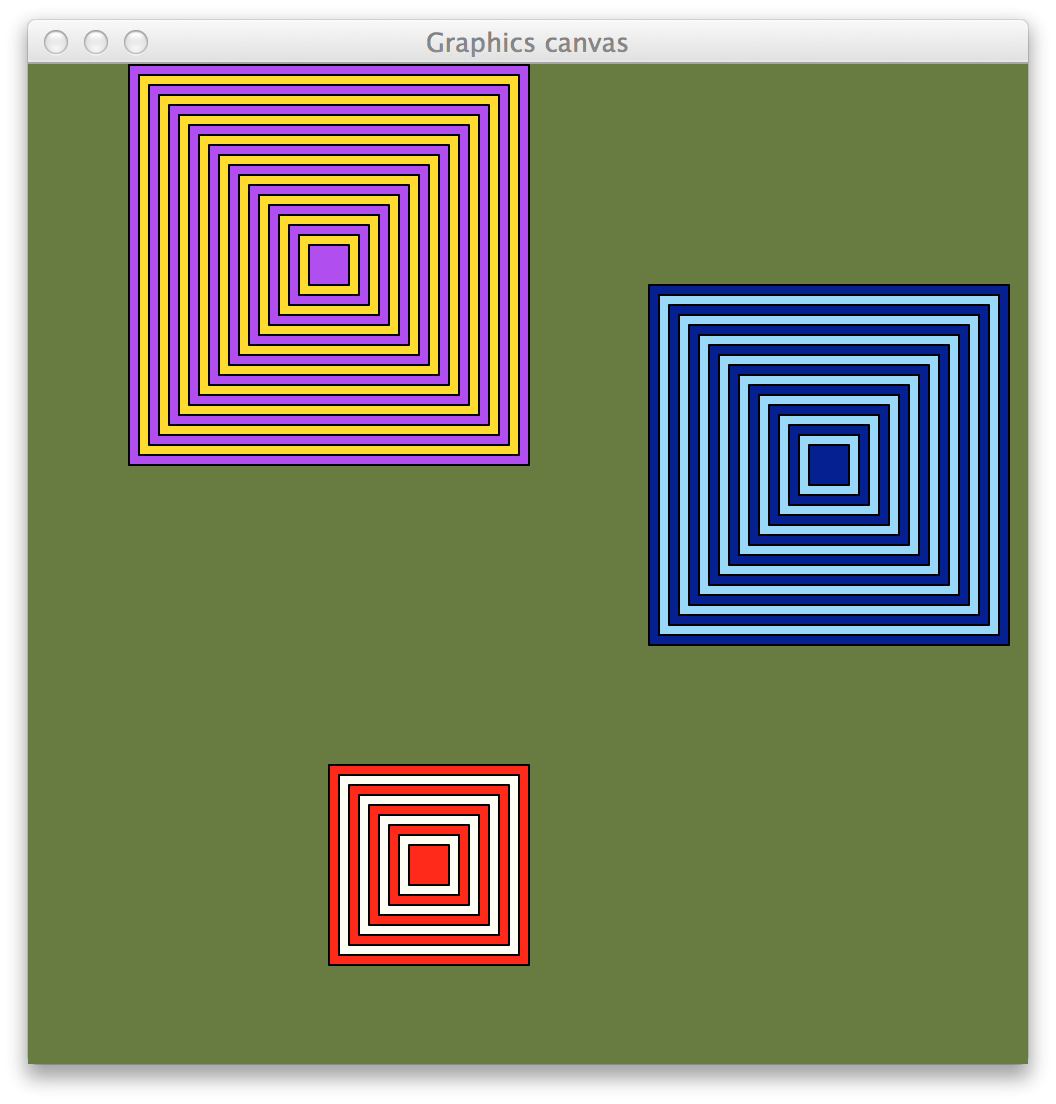
Invocations to create the boxes above are as follows:
# first, create and name the canvas paper = Canvas(500,500,'darkolivegreen') # makeNestedBoxes(x,y,size,color1,color2,paper) makeNestedBoxes(200,400,100,'red','ivory',paper) makeNestedBoxes(150,100,200,'purple','gold',paper) makeNestedBoxes(400,200,180,'navy','lightskyblue',paper)Task 4. Recursive pictures using cs1graphics: box pattern Building upon the
makeNestedBoxes() function above, this task adds
smaller versions of nested boxes at each of the four corners of every box.
The ratio of a box size to the corner box size is 1:3. The corner boxes
can only be drawn when they have a size greater than or equal to 10. Your nestedBoxPattern() function must be recursive.
Hint: start
with only one corner box (e.g. upper left), and when that works, go back and add in the
other 3 corner boxes..
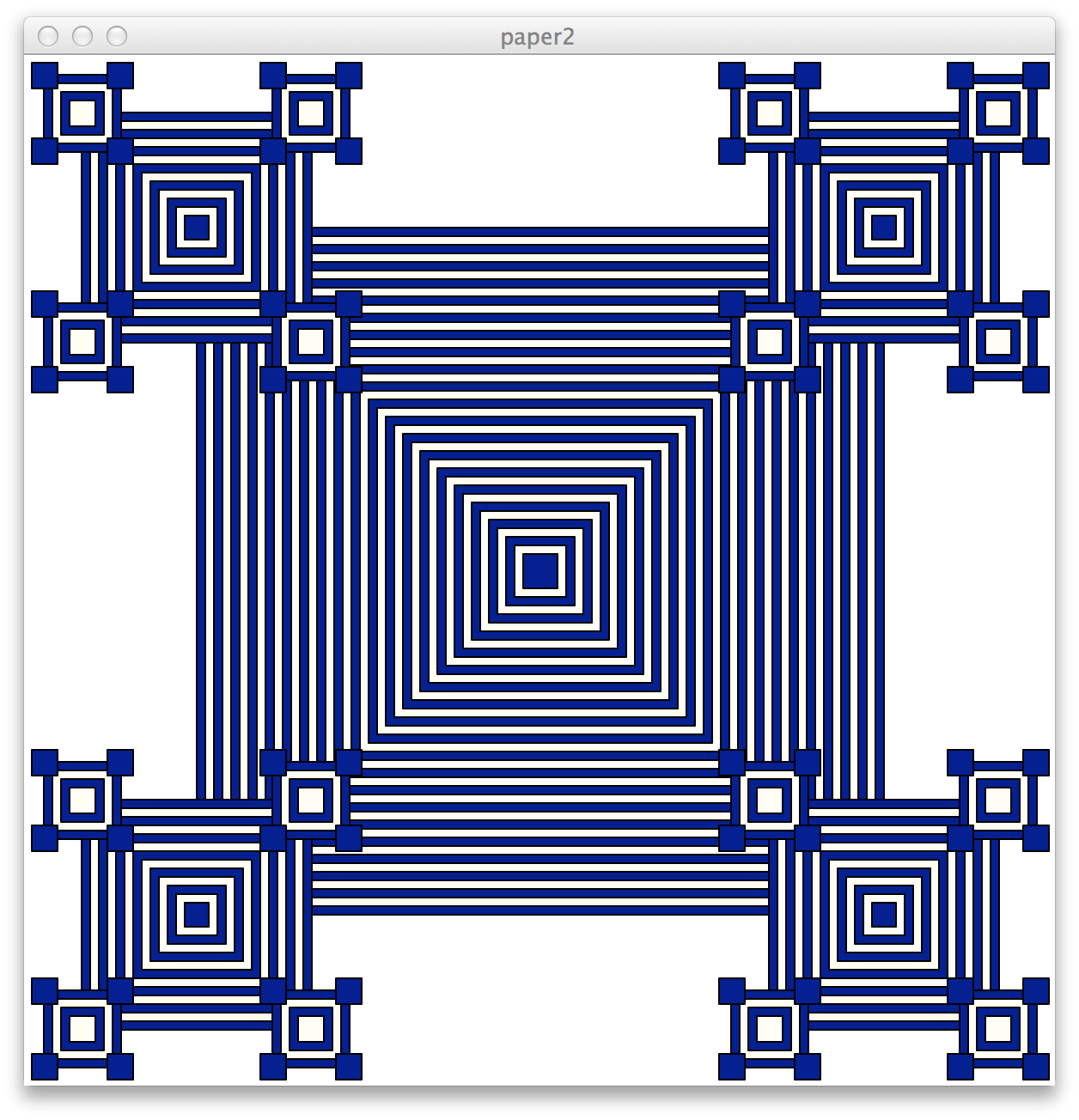
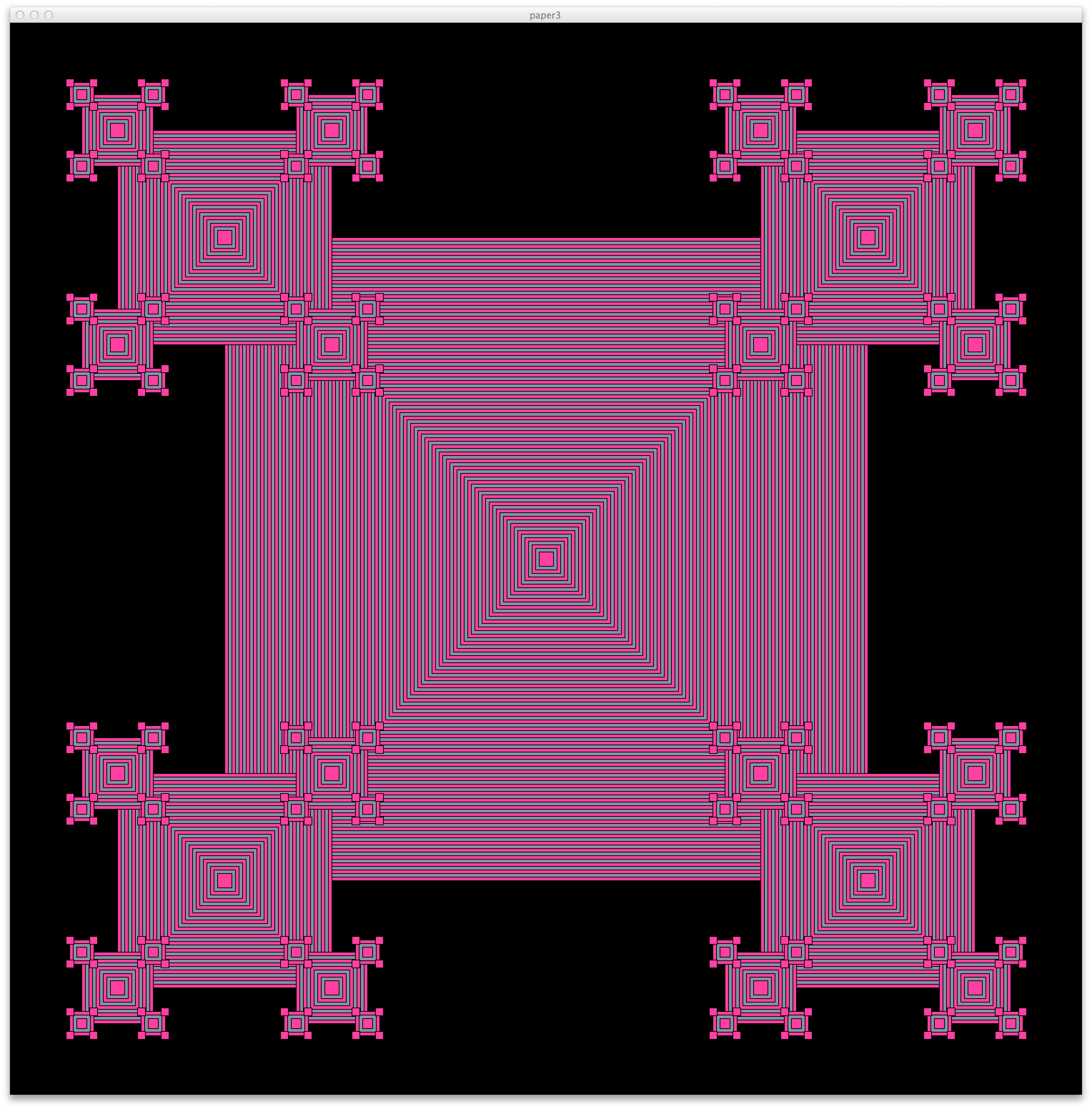
The patterns above were generated by the following code:
paper2 = Canvas(600,600,'white','paper2') nestedBoxPattern(300,300,400,'navy','ivory',paper2)and
paper3 = Canvas(1500,1500,'black,'paper3') nestedBoxPattern(750,750,500,'deeppink','slategray',paper3)
nestedBoxPattern() takes 6 parameters: the x
and y point where the box is centered,
the size of the largest box, the
outermost color1, the alternating color2,
and the canvas where the drawing should appear.
Note: here is a chart of the colors available to you through
cs1graphics.py.